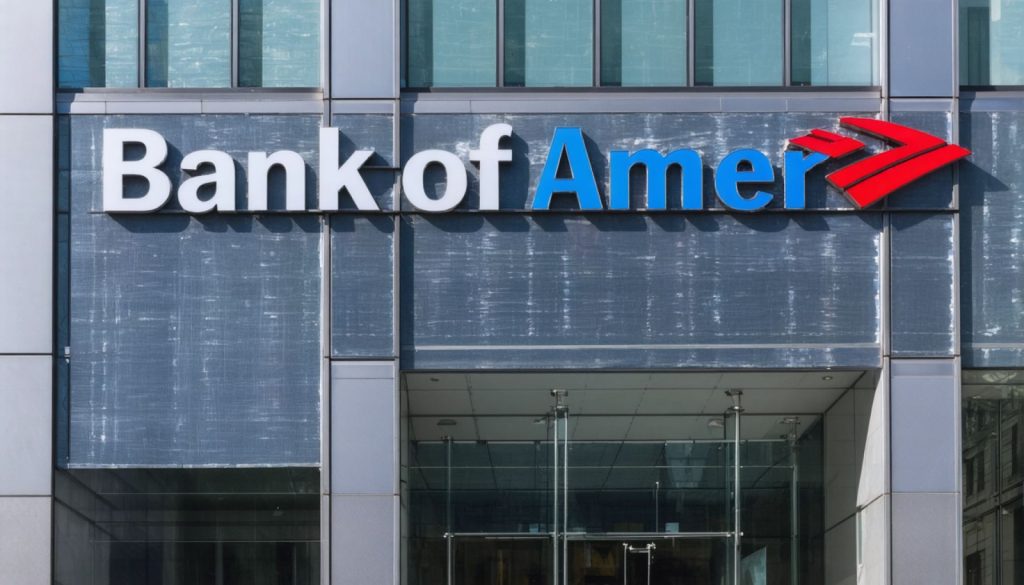
- Bank of America plans a $4 billion investment in AI and technology by 2025, accounting for nearly a third of its tech budget.
- AI is essential in enhancing operational efficiency, seen in its generative AI platform that supports informed decision-making on trading floors.
- “Erica for Employees” significantly reduces IT support demands, showcasing AI’s role in streamlining internal operations.
- The bank’s AI journey started in 2018 with the “Erica” assistant, which has facilitated over 2.5 billion client interactions.
- AI-driven training at “The Academy” enhances employee skills, making learning dynamic and transformative.
- Customer experiences are personalized through AI, refining feedback processes and service standards.
- With over 7,400 patents, 1,200+ focusing on AI, Bank of America is pioneering AI integration in banking.
- The successful adoption of AI in banking hinges on authentic integration into operational practices.
Amidst the swirling tides of technological transformation, Bank of America is preparing to invest a colossal $4 billion in artificial intelligence and new technology initiatives by 2025. This strategic allocation represents nearly one-third of its total technology budget and underscores the bank’s commitment to embedding cutting-edge innovations across its global operations.
Picture this: On bustling trading floors, amid the cacophonous symphony of ringing phones and hurried footsteps, AI swiftly sifts through market commentary and research, feeding traders the vital nuggets of information with uncanny efficiency. This internal generative AI platform slashes the time required to digest complex data, allowing teams to make faster, more informed decisions. It’s a microcosm of AI’s role at Bank of America, crafting a more nimble and responsive organization ready to navigate the financial landscape of tomorrow.
AI’s presence is palpable across Bank of America’s sprawling network. Consider “Erica for Employees”—an internal avatar of the celebrated customer assistant that over 90% of BofA’s 213,000 employees interact with on any given day. This virtual assistant shadows them, processing queries ranging from mundane IT requests to intricate HR inquiries, thereby halving the IT support call volume. This demonstrates how AI streamlines operations, freeing human intelligence to focus on creativity and engagement.
The bank’s adventures with AI began in 2018 when it introduced “Erica” to its clients. Over the years, this digital guide has deftly handled more than 2.5 billion interactions, becoming a financial confidante to 20 million users. In times of digital proliferation, Erica has evolved, enabling employees and clients alike to interact with advanced AI seamlessly woven into the banking fabric.
This expansive AI strategy extends into employee education as well. “The Academy,” BofA’s learning nucleus, integrates AI to enhance training programs. Employees partake in simulated client scenarios, receiving instant feedback to refine their interpersonal skills. It’s learning reimagined—dynamic, responsive, transformative.
Beyond mere transactional support, Bank of America’s AI ambitions include refining customer experiences. AI processes customer feedback with precision, allowing service teams to tailor interactions with a personalized touch. The outcome is a more intuitive, empathetic customer service environment that redefines industry standards.
With over 7,400 patents and pending applications under its belt, over 1,200 of which focus on AI and machine learning, Bank of America is not merely reacting to a digital trend but rather shaping the future of banking. The message is unequivocal: embracing AI is not just about keeping pace with technology—it’s about setting the pace.
As the bank forges ahead, the takeaway is clear: AI and machine learning hold the keys to unparalleled efficiency and service in the banking sector. Yet, the core of their success lies not just in adopting new technologies but embedding them authentically into their operational ethos. Thus, through the intentional integration of AI, Bank of America exemplifies how financial institutions can thrive in a rapidly evolving digital economy.
Will Bank of America’s $4 Billion AI Investment Transform the Financial Landscape?
Bank of America’s ambitious $4 billion investment in artificial intelligence and technology by 2025 is a strategic move aimed at revolutionizing its operations and customer interactions. This investment showcases the bank’s commitment to leveraging AI to enhance efficiency, customer service, and employee training. Below are additional insights into this transformative initiative.
AI in Financial Operations
Real-World Use Cases
Bank of America is utilizing AI to enhance its trading platforms and backend operations. AI tools help traders by quickly processing vast amounts of market data and providing critical insights. This allows financial analysts to make more informed trade decisions rapidly.
Security & Sustainability
AI technologies also play a role in ensuring security and sustainability. Machine learning algorithms are being used to detect and prevent fraud, ensuring that customer transactions remain safe and secure. Furthermore, AI’s ability to optimize data centers and manage resources means a reduced carbon footprint in banking operations.
Employee and Customer Engagement
Enhancing Productivity
“Erica for Employees” improves operational efficiency by handling routine inquiries, significantly reducing the volume of IT support calls. This allows employees to focus on more strategic tasks, thereby boosting productivity across the organization’s vast network.
Personalized Customer Service
AI-driven customer feedback analysis enables the bank to provide highly personalized customer service experiences. By tailoring interactions and responses based on individual customer data, Bank of America not only improves satisfaction but also increases customer loyalty.
Innovations in Employee Training
Advanced Learning Techniques
Bank of America’s “The Academy” uses AI to create simulated client scenarios, providing employees with virtual hands-on training experiences. This AI-driven environment allows for instantaneous feedback and continuous improvement of interpersonal skills, ensuring that employees remain at the forefront of industry standards.
Industry Trends and Predictions
Market Forecasts
The integration of AI in financial services is expected to grow exponentially. According to industry experts, AI-driven solutions are projected to save the global banking sector over $1 trillion by 2030 through increased efficiencies and risk mitigation.
AI Patent Accumulation
With over 7,400 patents related to AI, Bank of America is poised to lead the charge in innovative banking solutions. These patents emphasize the bank’s role not just in adopting new technologies but also in contributing to their evolution.
Pressing Questions and Recommendations
How can customers benefit directly from AI advancements?
Customers will witness enhanced service delivery, with AI-powered tools enabling faster, more accurate transaction processing, personalized financial advice, and improved security measures.
What should other banks learn from Bank of America’s approach?
Other financial institutions should focus on integrating AI not merely as a technological upgrade but as a core aspect of their service delivery and operational ethos.
Actionable Tips
1. Embrace AI Training: Organizations should implement AI-driven training programs to keep employees’ skills updated.
2. Focus on Cybersecurity: As AI adoption increases, ensure robust cybersecurity measures are in place to protect sensitive data.
3. Enhance Customer Experience: Utilize AI tools to tailor customer interactions for improved satisfaction and loyalty.
For more information and latest updates on AI in banking, visit Bank of America.
This investment by Bank of America is not just a step towards adopting new technology but a giant leap in redefining banking in the digital age. By embedding AI authentically into their operations, they are setting new standards and leading the charge toward a more efficient and customer-focused banking industry.



